Rauzan-Ségla 2016
Bordeaux en primeur analysis on Rauzan-Ségla 2016, which has been released this afternoon with a UK RRP of £61.20:
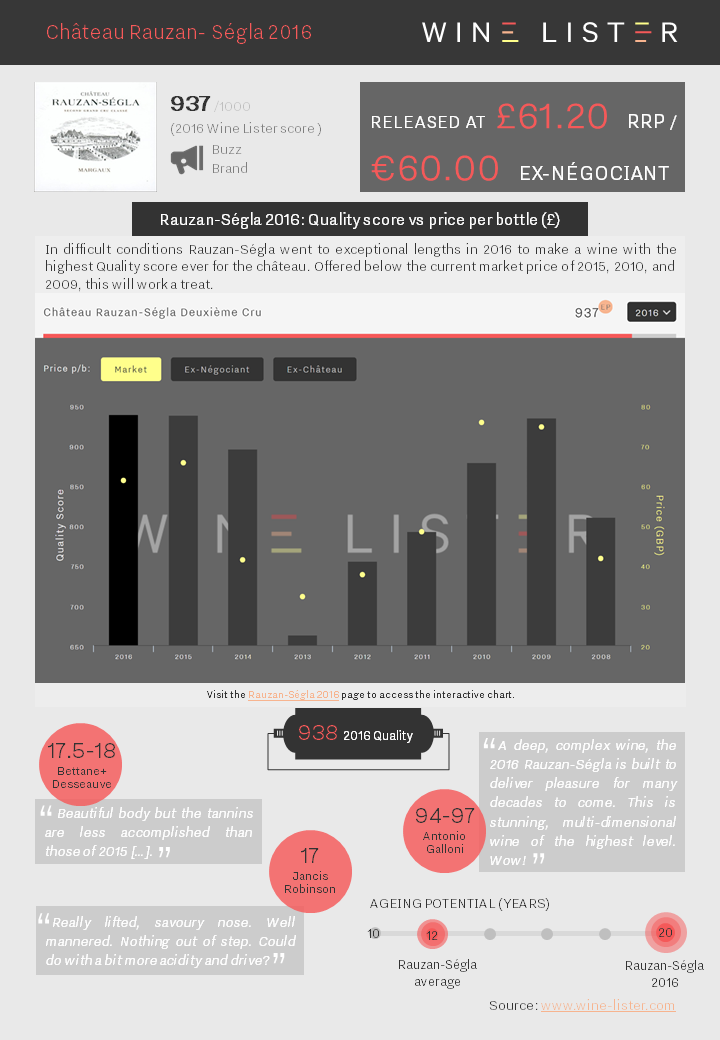
You can download the slide here: Wine Lister Factsheet Rauzan-Ségla 2016
Bordeaux en primeur analysis on Rauzan-Ségla 2016, which has been released this afternoon with a UK RRP of £61.20:

You can download the slide here: Wine Lister Factsheet Rauzan-Ségla 2016
Bordeaux en primeur analysis of Canon 2016, which has been released this afternoon with a UK RRP of £73.35:
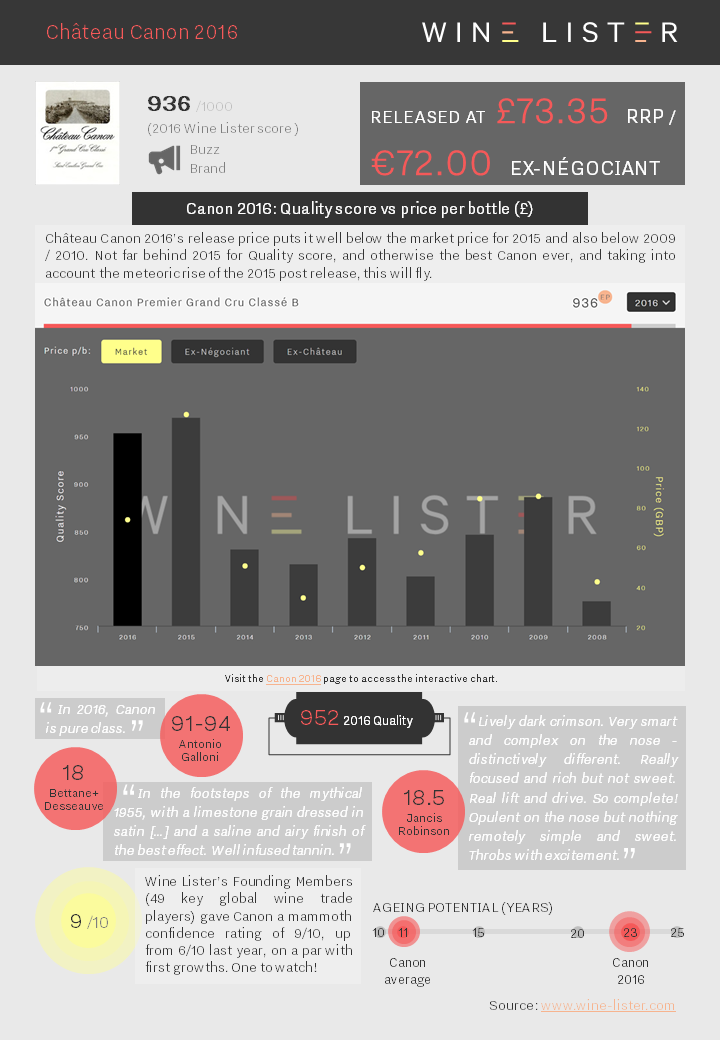
You can download the slide here: Wine Lister Factsheet Canon 2016
Bordeaux en primeur analysis on Lafon-Rochet 2016, which has been released today with a UK RRP of £34:
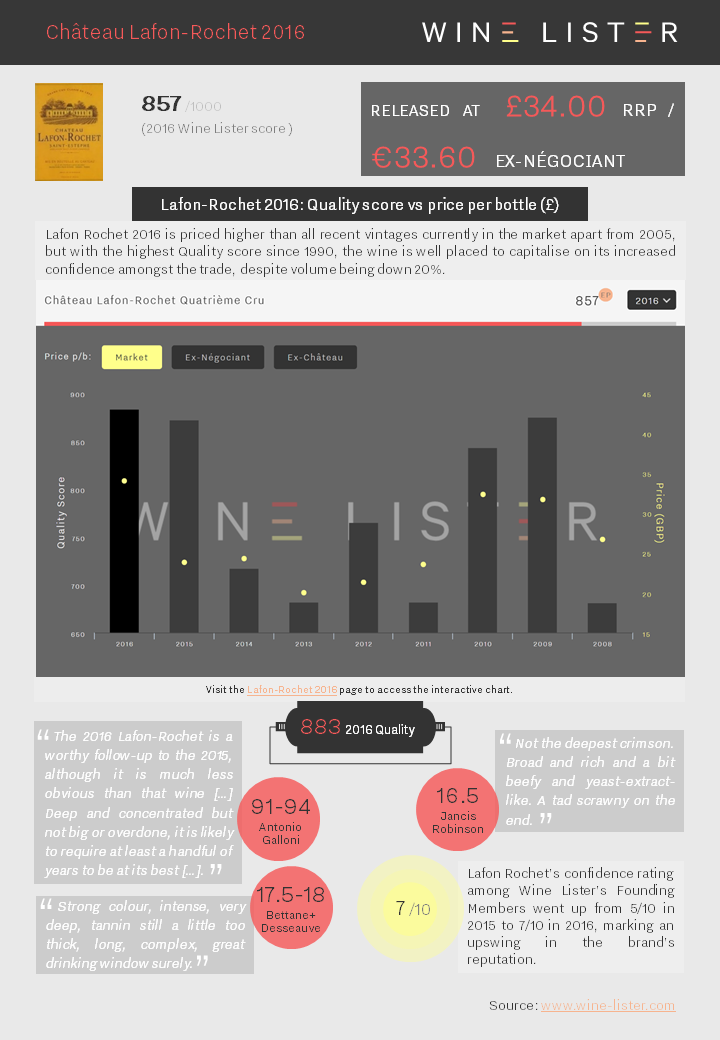
You can download the slide here: Wine Lister Factsheet Lafon-Rochet 2016
Bordeaux en primeur analysis of Mouton Rothschild 2016, which has been released this morning with a UK RRP of £432:
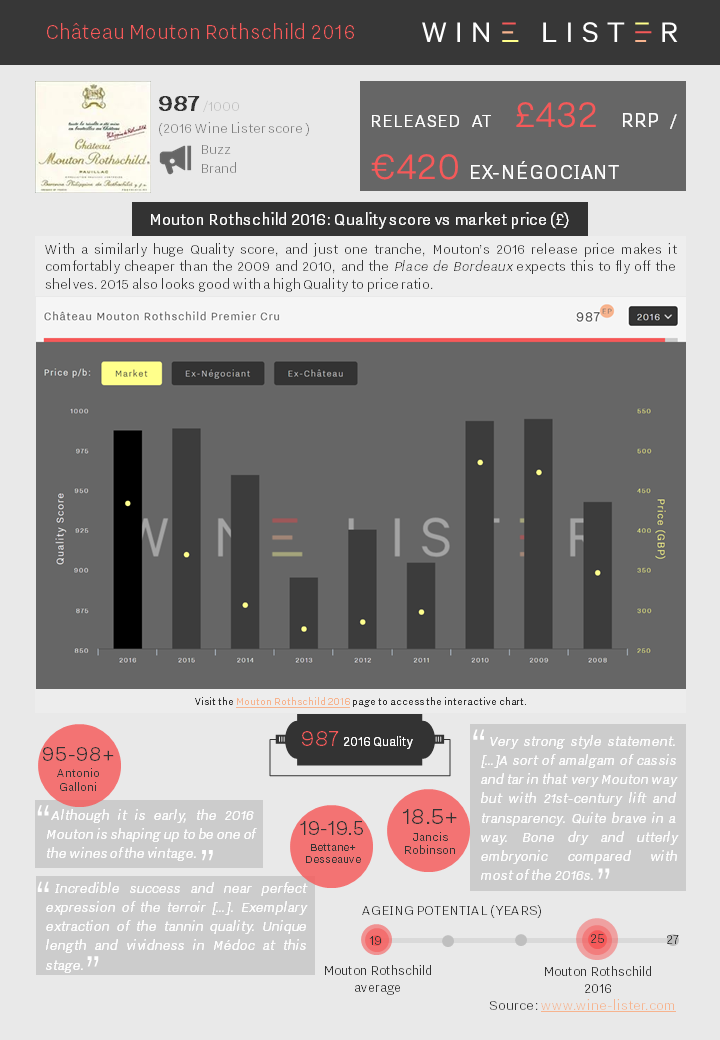
You can download the slide here: Wine Lister Factsheet Mouton Rothschild 2016
Earlier this month Wine Lister published its annual Bordeaux Market Study, and in recent weeks we’ve published a few nuggets from the 48-page long study on this blog (such as the top-scoring Bordeaux crus, and how to arrive at a 2016 release price). Today, we’re going to explore the popularity of Bordeaux’s individual appellations by looking at the online search frequency from our data partner Wine-Searcher for the six most popular wines of each.
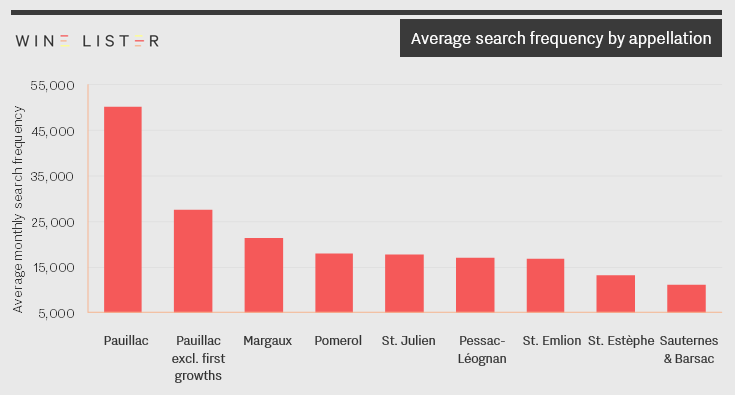
Unsurprisingly, Pauillac – home to three of the five first growths – leads the way, with well over double the number of searches as nearest rival Margaux. If we exclude Châteaux Lafite, Mouton and Latour, the Pauillac average is just under 27,500 searches per month, still 29% ahead of Margaux.
Pomerol comes third, defying low production levels to achieve more average searches for its top wines than Saint-Julien. Pessac-Léognan benefits from the inclusion of Haut-Brion to help it edge ahead of Saint-Emilion, in spite of the latter’s four premiers grands crus classés A, while Saint-Estèphe and Sauternes & Barsac bring up the rear.
This is just a taster of the 2017 Bordeaux Market Study. You can download the full 48-page report from the Wine Lister Analysis page (subscribers only).
Bordeaux en primeur analysis on Calon Ségur 2016, which has been released this morning with a UK RRP of £63.75:
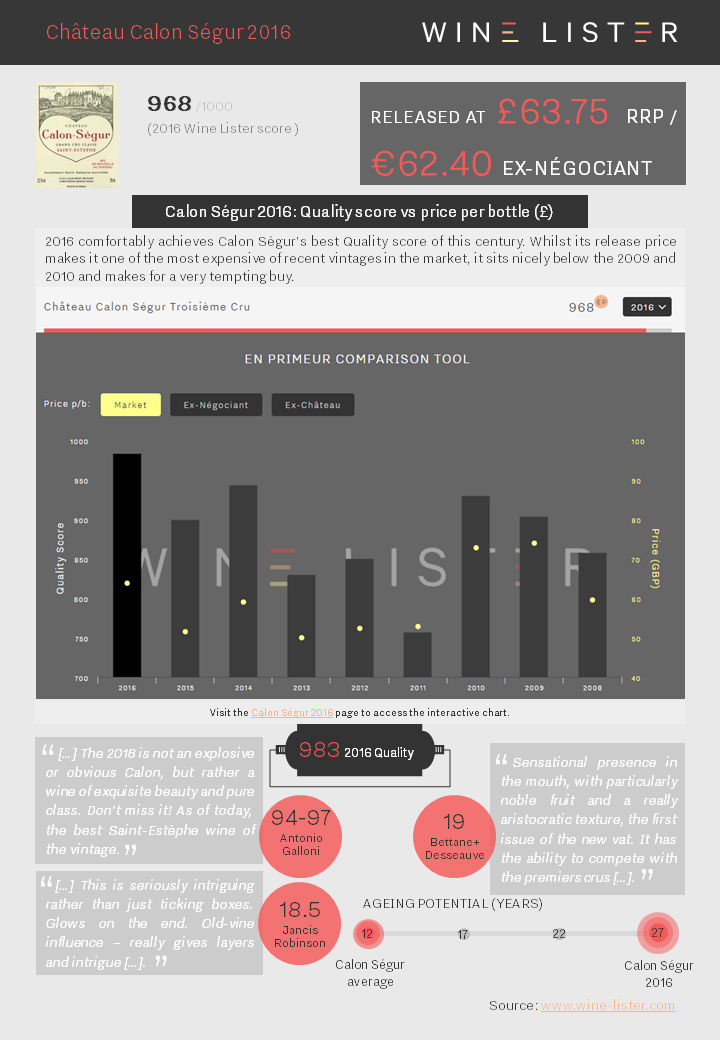
You can download the slide here: Wine Lister Fact Sheet Calon Ségur 2016
Bordeaux en primeur analysis of Haut-Brion 2016, which has been released this morning at €420 ex-négociant:
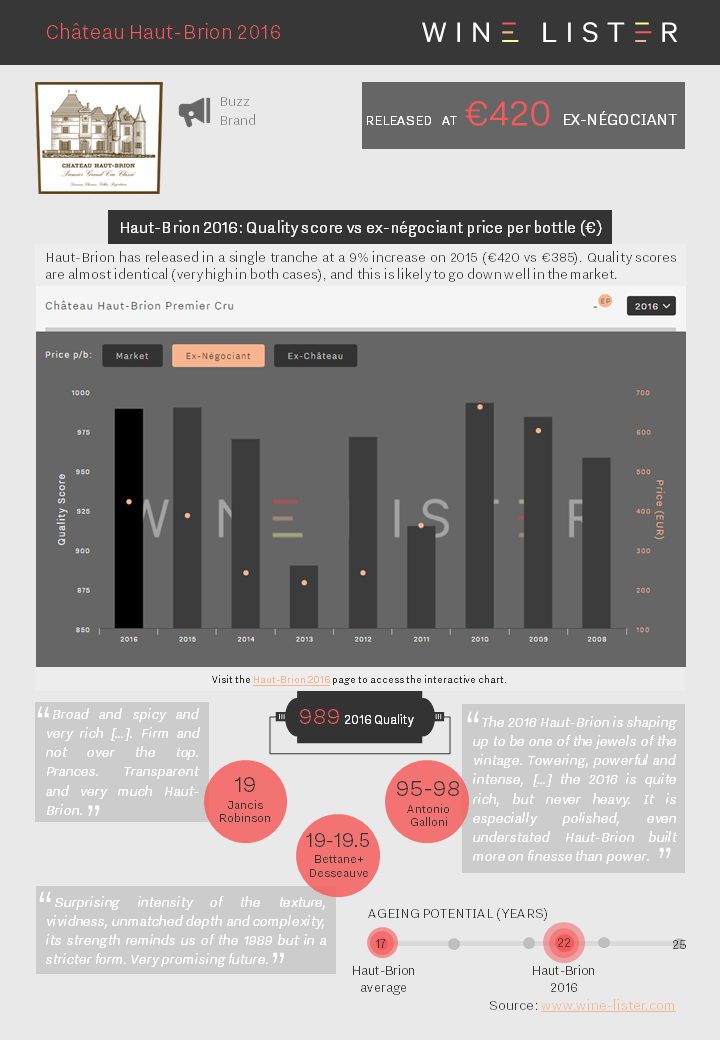
You can download the slide here: Wine Lister Factsheet Haut-Brion 2016
Wine Lister is one year old already (we launched in May 2016). To mark our first birthday, we thought we’d take a quick look back at how we’ve grown and developed in the last year.
First, our website has evolved non-stop! As well as bringing you a full, 360° view of thousands of individual wines, we’ve introduced lots of new features to make it easier for you to analyse and compare them. One of these is our wine comparison tool, enabling you to view wines side-by-side: simply search for the wine you’re interested in, and click the Compare button.
As a birthday treat, we’ve just revamped our home page, and, by popular demand, launched a how it works page, with explanations on the criteria that feed into our three main categories – Quality, Brand and Economics – to arrive at a single wine score using our full 1,000 point scale.
For companies wanting seamlessly to access our proprietary scores and data for publication on their own platforms, we’ve built a dedicated Wine Lister API. To express your interest in accessing our data via this feed, please enroll here.
On the analysis side, we established the Wine Lister blog to bring you proprietary research on fine wine trends, new releases, and exclusive wine trade observations. Plus, you can visit the analysis page of our website to find our popular, highly-visual wine factsheets, alongside in-depth regional reports – the latest of which is Wine Lister’s second annual study on Bordeaux.
Finally, our team has also multiplied, now counting seven members in total, including new colleagues in Bordeaux and Tuscany in addition to our core UK-based team.
Thank you to all of our subscribers and readers for your continued support, and we look forward to updating you with how we evolve in the twelve months to come! If you have any comments or suggestions, please email team@wine-lister.com.
Bordeaux en primeur analysis of Lynch-Bages 2016, which has been released this morning at €96 per bottle ex-négociant:
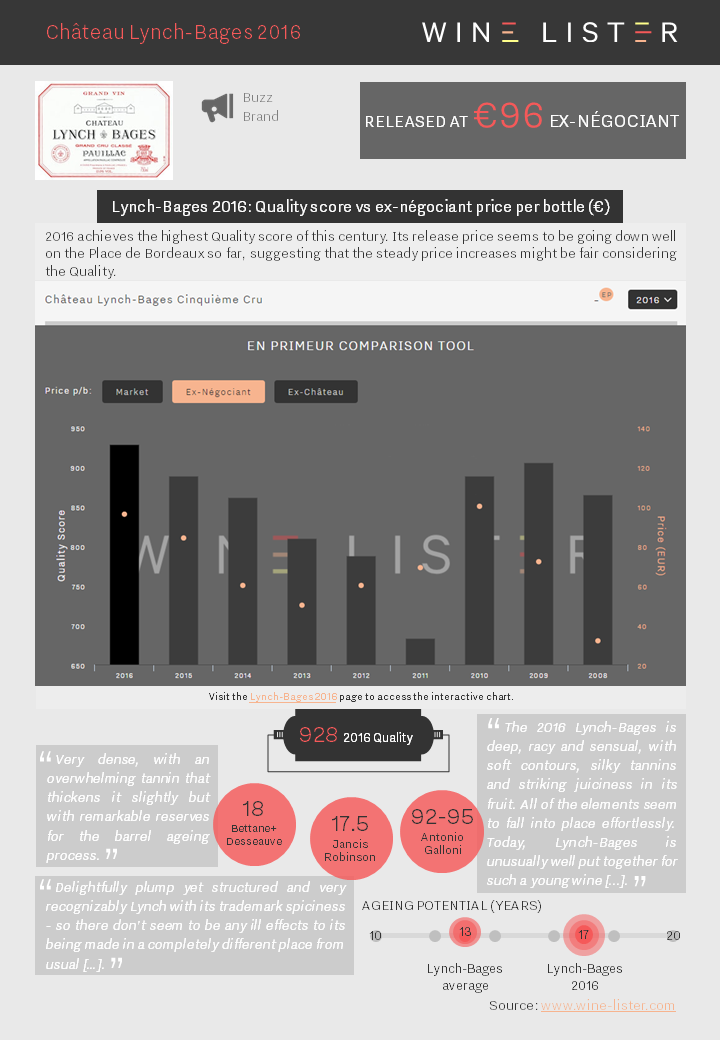
You can download the slide here: Wine Lister Factsheet Lynch-Bages 2016
Bordeaux en primeur analysis of Angélus 2016, which has been released this morning at £298:
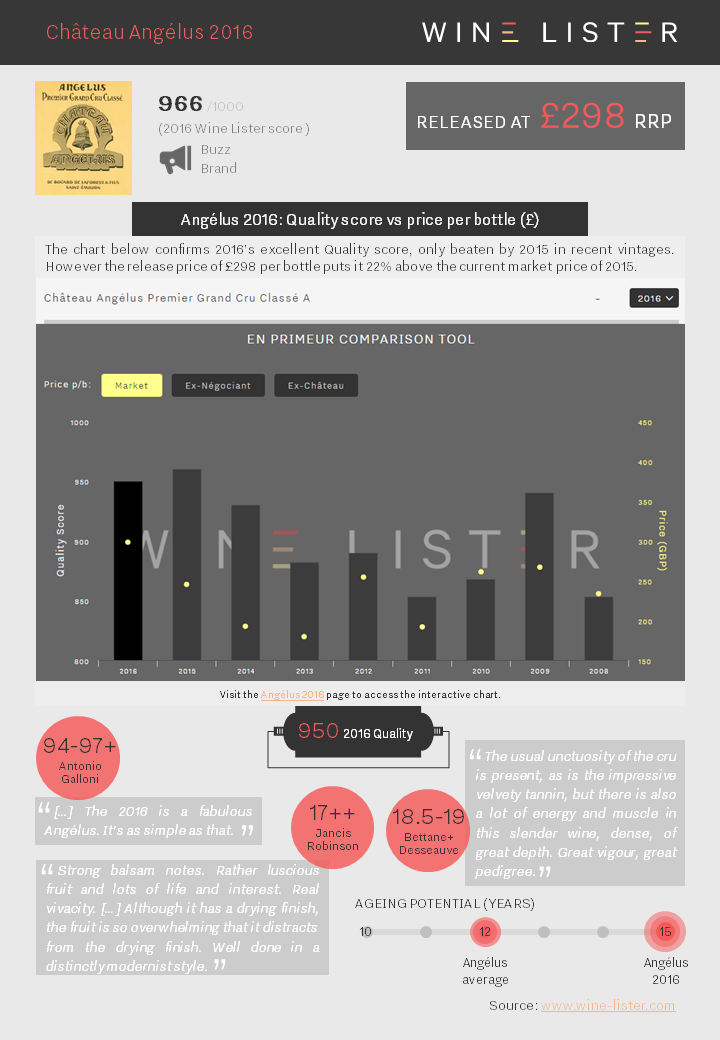
You can download the slide here: Wine Lister Factsheet Angélus 2016